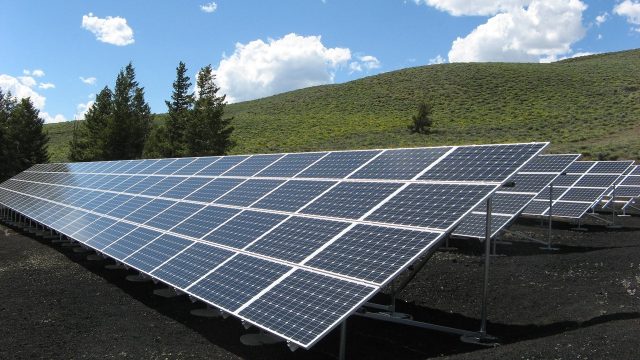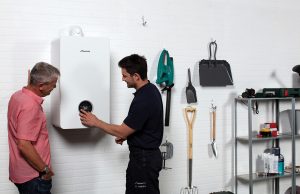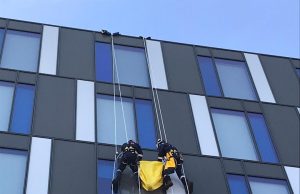
A midwestern solar farm is using a TE Connectivity solution to reduce the hassle involved with installing electrical connections of the farm. This new solution is a significant improvement from the preceding options and a suitable alternative to these challenging conditions.
The Challenges of Solar Farm Installation
The site’s installation process has taken more than a year and required more than 250 workers.
The site is located in a former rice patty in rural Arkansas in an area subject to flooding. It is also prone to regular thunder and lightning storms, tornadoes, and long periods of heatwaves. All these elements and the COVID-19 pandemic contributed to the uncertainty of the project completion.
Because of the standing water related to the flooding, wire and cable installation and maintenance can be daunting. In response, above ground cable hangers were to be installed, but this also made the process more tiresome and time-consuming. According to the on-site project manager, such challenging conditions cause the labor costs to escalate quickly, and this is a huge disadvantage.
In order to rise above these challenges, the EPC sought after TE Connectivity’s Solar Customizable Trunk Solution (CTS). With centralized trunk-bus architecture, the CTS system provides a more convenient wiring solution than the traditional means of solar farms. This new invention does not require a thousand combiner box connections to optimally function.
Viable Solutions
The CTS system by TE Connectivity makes the installation process more manageable and convenient. It uses patent-pending Gel Solar Insulation Piercing Connectors (IPCs), known for fast and easy installation.
The IPCs penetrate the insulating jacket of the cable through its small piercing blades. They then establish a stable electrical connection to the conductors located beneath the insulating jacket. This is a quick process since it doesn’t require insulation stripping. Therefore, a field technician would require a socket or impact wrench for the installation. The Gel Solar IPCs includes a protective gel box sealed with TE’s Raychem power gel sealant to protect the connection from moisture ingress for a lifetime.
This improved system sees to it that the on-site technicians only use two minutes to install two IPCs. This includes cleaning the cable, testing it for continuity, setting the IPCs by hand tightening, using a cordless impact wrench to tighten the shear bolt connectors to the specification, applying the gel box enclosure, testing the continuity at the jumper connector, and cutting the end string to length. Installing the IPCS is then simplified by using a shear bolt head. It automatically shears off after the desired torque is achieved, and the blades have penetrated the cable insulation, and the right conductor strands reached. Each onsite technician takes 20 seconds on the shear bolt installation, which significantly reduces the traditional approach that involves more time and labor.
According to the project manager at the site, the installation speed improved. He further states that the traditional approach can take 20 minutes for both the positive and negative ends.
The Results
An installation expert on the Arkansas solar farm commented that TE Connectivity significantly helped reduce the time and labor needed for the electrical installation processes. Furthermore, the installer sited that they can now install 10 IPCs and terminate a Trunk Bus Disconnect (TBD) in 20 minutes. It is an excellent time-saving technique.
With the CTS system, the professionals experienced a significant reduction in the number of connections. This minimizes the current leakage and voltage drop in the whole solar farm. In this specific project, the CTS architecture is tasked with assisting the solar far meet its target of 1.5% maximum voltage drop in the DC distribution network.
According to the site’s project manager, extensive on-site training for the installation experts and clear documentation and communication have been indispensable in making the streamlining work.
Before the inevitable project delays, the EPC had projected that the installation process would run three months behind schedule. With the decision to shift to TE Connectivity’s CTS, the EPC now estimates to complete the installation project a week or two after the initial set date.













